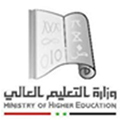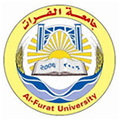آخر الأخبار
تشخيص الفطور المفرزة للأفلاتوكسينات وتقديرها في بعض الاغذية المنتشرة في دمشق وريفها
2011, Volume 3, issue 11,pp 189-202| Cite as
Identification of Aflatoxin Fungi And Appreciation in some food scattered in Damascus And Its Countryside
| authors |
Daood.R , Abou-ghorrah.S , yazgi .S |
| Abstract |
33 samples have been collected from 11 different food items found in Damascus and its countryside (Dairy Products - Nuts - Grains - red pepper - orange juice) and that the rate of 3 samples of each material. Isolated fungi in these samples and were diagnosed as follows: Aspergillus flavus, Aspergillus niger, Aspergillus parasiticus in samples of nuts,while Aspergillus crustosum, Aspergillus candidus, Penicillium commune, Penicillium crustosum in dairy products , and appeared genus Fusarium avenaceum in samples of wheat studied, genus Xeromyces bisporus in most samples of red pepper, while the observed gender Aspergillus.parasiticus and Penicillium.italicum in orange juice, and for the rice samples contained the following types: Aspergillus.ochraseus,Penicillium.crustosum,Cladosporium.marocarpum. And fungal species were distributed differently between the studied samples, where genus Penicillium had the highest frequency which was about 80% of the samples, while the lowest frequency of genus Xeromyces was around 20%. then the amount of total aflatoxin was estimated using a Flourometer type VICAM The results have showed the different content of aflatoxin in the studied samples. It was high in the nuts (where it arrived in some samples to 76 ppb), as well as in Shenklish about(3.5-20ppb) and this is due to the presence of fungi producing aflatoxins while it was low in the butter and the white cheese (as it did not exceed the quantity 1.5ppb). Thus,the results have indicated the presence of some of the samples are not in conformity with Syrian standard specifications No. 2680 of 2002. |
| الكاتب |
صياح أبو غرة, صباح يازجي, رشا داود |
| الملخص |
جمعت 33 عينة من 11 مادة غذائية من محافظة دمشق وريفها (منتجات ألبان-مكسرات-حبوب- فلفل أحمر-عصير برتقال) وذلك بمعدل 3 عينات لكل مادة. عزلت الفطور شخصت حسب ترددها في العينات كالتالي: Aspergillus flavus, Aspergillus niger, Aspergillus parasiticus في عينات المكسرات بينما Aspergillus crustosum, Aspergillus candidus, Penicillium commune, Penicillium crustosum في عينات منتجات الألبان, وظهر النوع
Fusarium avenaceum في عينات القمح المدروسة, والنوع Xeromyces bisporus في معظم عينات الفلفل الأحمر, بينما لوحظ النوعين Aspergillus.parasiticus و Penicillium.italicum في عصير البرتقال, أما بالنسبة لعينات الرز فقد احتوت على الأنواع التالية: Aspergillus.ochraseus,Penicillium.crustosum,Cladosporium.marocarpum. وتوزعت الأجناس الفطرية بشكل مختلف مابين العينات المدروسة حيث احتل الجنس Penicillium أعلى نسبة تردد فكانت حوالي 80% من العينات, بينما كانت أقل نسبة تردد في الجنس Xeromyces فهي حوالي20%. قدرت بعد ذلك كمية الأفلاتوكسين الكلي باستخدام جهاز Flourometer من نوع VICAM وبينت النتائج اختلاف محتوى الأفلاتوكسين في العينات المدروسة فكان مرتفعاً في المكسرات (حيث وصل في بعض العينات إلى76 ppb) وكذلك في الشنكليش (حوالي 3.5- ppb20 ) وهذا يعود إلى وجود الفطريات المنتجة للأفلاتوكسينات بينما كان منخفضاً في الزبدة والجينة البيضاء (إذ أنه لم تتجاوز كميته الـ1.5ppb). وبذلك دلت النتائج على وجود بعض العينات غير مطابقة للمواصفات القياسية السورية رقم 2680 لعام 2002. |














